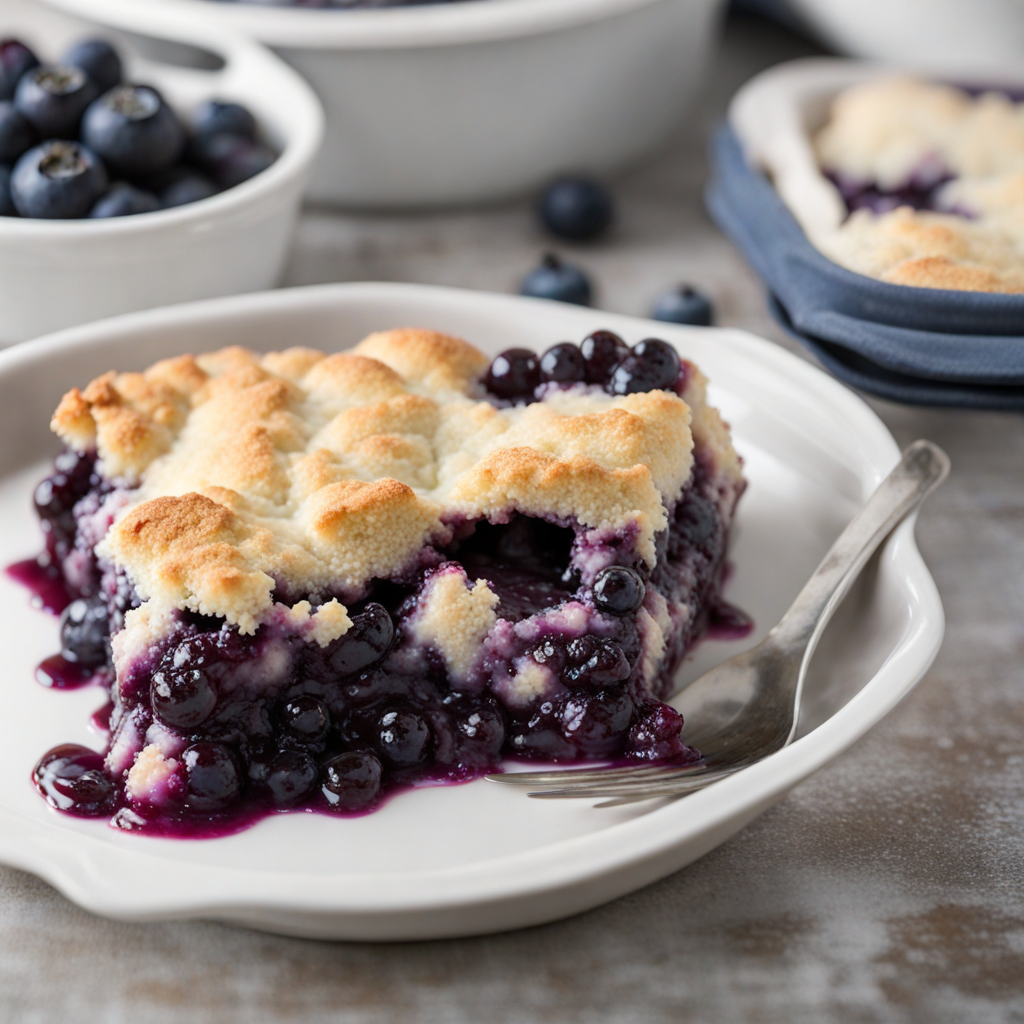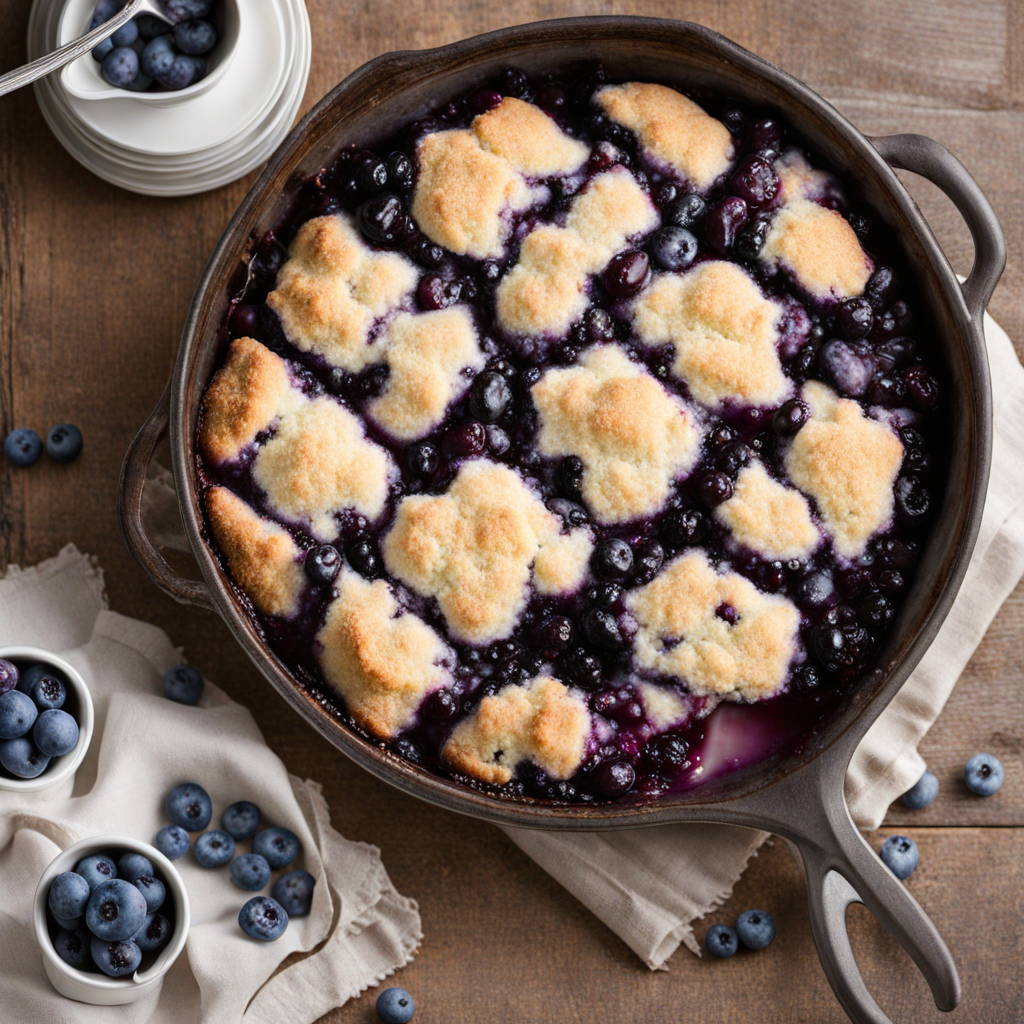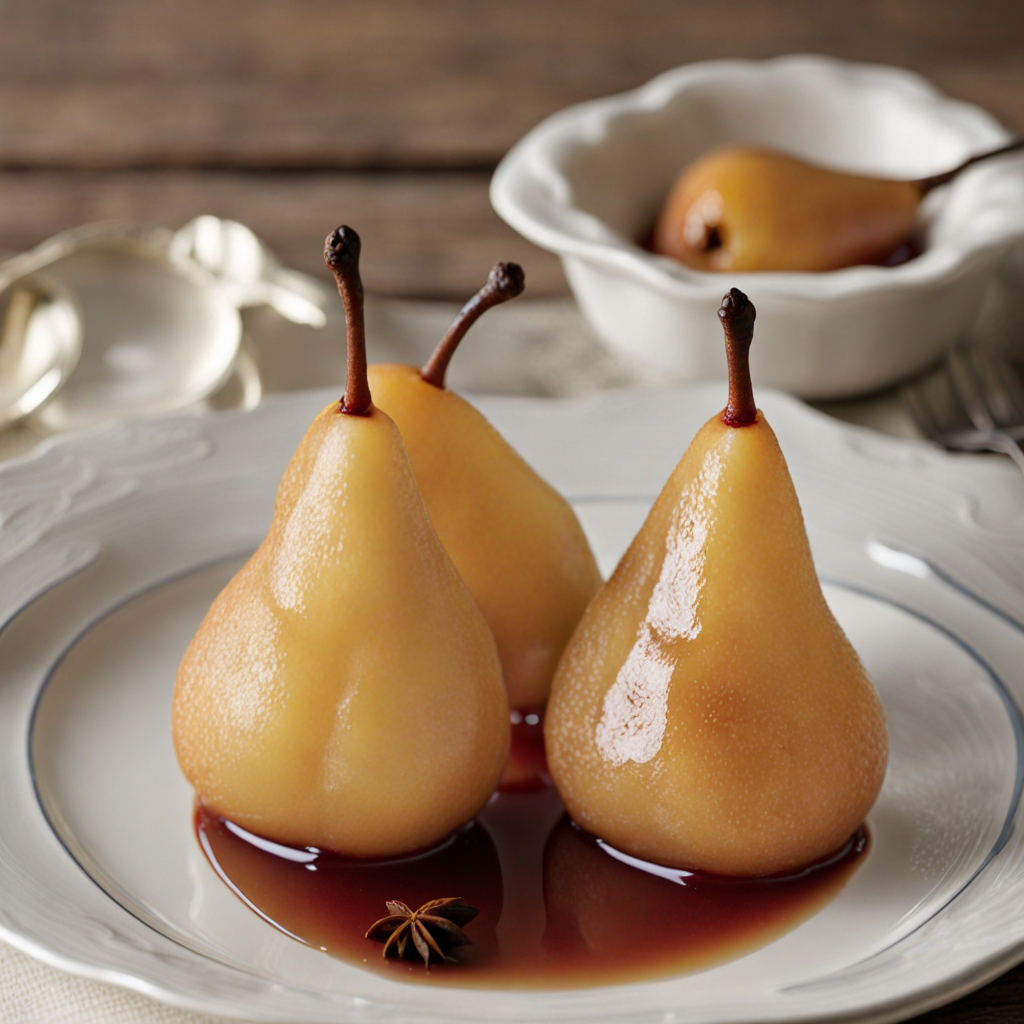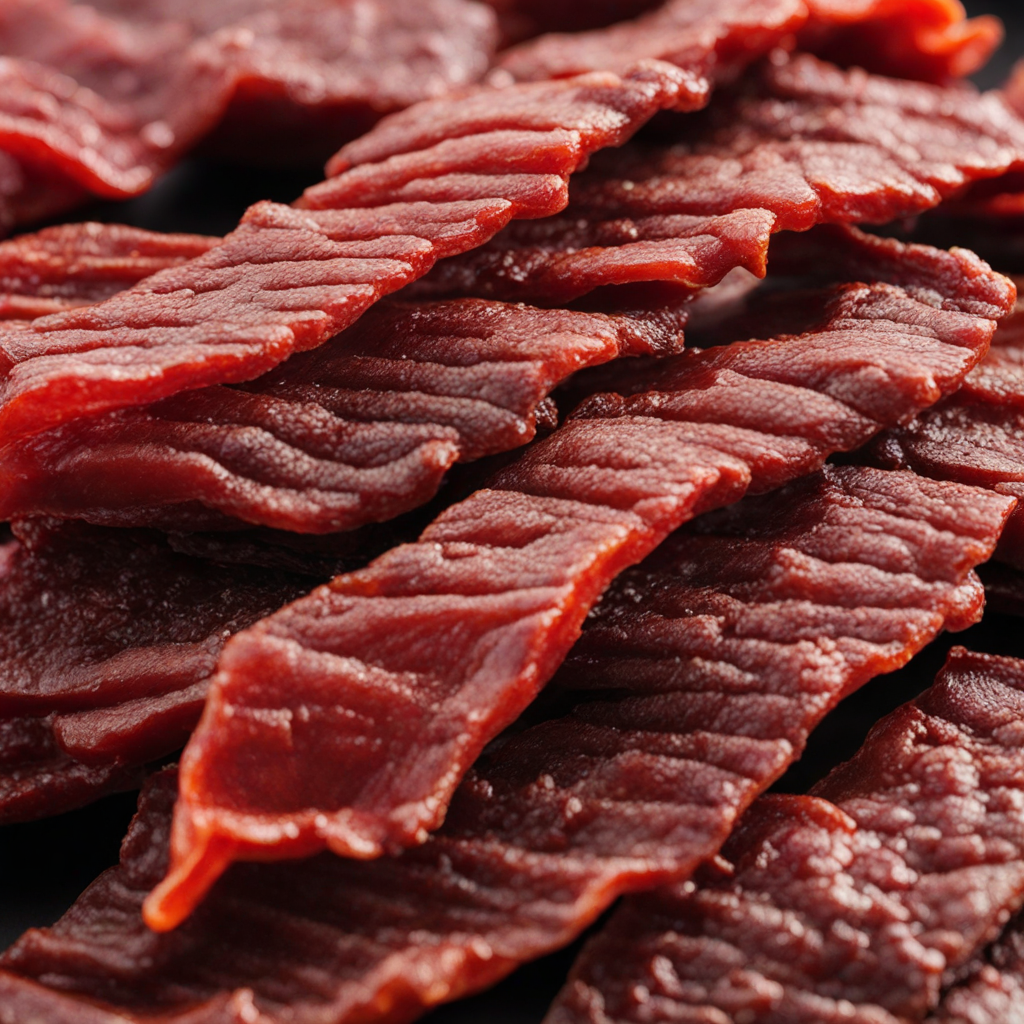Blueberry Cobbler
Blueberry Cobbler is a delightful dessert that showcases the sweet and tangy flavor of fresh blueberries, a beloved fruit native to North America. This dish is typically made with a generous filling of ripe blueberries, often mixed with sugar and a hint of lemon juice to enhance their natural sweetness. The berries are usually baked in a shallow dish, creating a warm, bubbly mixture that is both comforting and satisfying. The vibrant purple hue of the blueberries contrasts beautifully with the golden crust that forms on top, making it as visually appealing as it is delicious. The topping of Blueberry Cobbler is what truly sets it apart from other fruit desserts. It often consists of a buttery biscuit or cake-like batter that is spooned over the blueberries before baking. As it cooks, the topping becomes golden brown, crisp on the outside, and soft inside, perfectly complementing the juicy blueberry filling. Some variations may include a crumble topping made from oats, flour, and brown sugar, adding a delightful crunch to each bite. The combination of textures—smooth, warm berries and a tender, flaky crust—creates a harmonious experience for the taste buds. Served warm, often with a scoop of vanilla ice cream or a dollop of whipped cream, Blueberry Cobbler is a quintessential American dessert that embodies comfort and nostalgia. It is commonly enjoyed during summer months when blueberries are in season, making it a perfect treat for family gatherings, picnics, or cozy evenings at home. The simplicity of its ingredients and the ease of preparation make it a favorite among home bakers looking to impress without too much effort, inviting everyone to savor a taste of summer with each delicious bite.
How It Became This Dish
The History of Blueberry Cobbler in the United States Blueberry cobbler is a beloved dessert that embodies the flavors of summer, the essence of American culinary tradition, and the history of the nation itself. This dish, with its luscious blueberries and buttery, biscuit-like topping, has roots that intertwine with the agricultural practices, cultural exchanges, and regional variations that characterize American food history. #### Origins and Early Influences The history of blueberry cobbler can be traced back to the early European settlers in North America. When these settlers arrived, they brought with them a variety of baking traditions from England, including pies and crumbles. However, they quickly adapted their recipes to incorporate local ingredients, leading to a unique culinary fusion. Blueberries, native to North America, were a natural addition to their diets. Indigenous peoples had long used blueberries for food and medicine, recognizing their nutritional value and sweet flavor. The term "cobbler" itself has an uncertain origin but is believed to derive from the 19th-century British dish known as "cobbler," referring to a pie with a biscuit topping. This style of dessert became popular in the American South during the 19th century, particularly during the time of the westward expansion, when settlers sought to make use of the abundant fruits available in their new environment. The cobbler's ease of preparation made it an appealing choice for families who often had limited resources and time. #### Cultural Significance As blueberry cobbler became more widespread, it became emblematic of certain regional identities, particularly in the Northeast and the South. The northeastern states, with their abundant wild blueberry patches, contributed significantly to the popularization of the dish. Maine, in particular, is known for its wild blueberries, and the state has established its identity around this small fruit. The annual Maine Blueberry Festival celebrates this heritage, showcasing everything from blueberry picking to blueberry cobbler contests. In the South, blueberry cobbler took on its own cultural significance, often appearing at church picnics, family reunions, and community gatherings. The dish became a symbol of hospitality and comfort, reflecting the Southern tradition of communal meals. Recipes were passed down through generations, each family adding its unique twist—whether it be a hint of cinnamon, a dash of vanilla, or a pecan topping. These adaptations not only highlighted personal tastes but also showcased the creativity and resourcefulness of home cooks. #### Development Over Time The late 19th and early 20th centuries saw significant changes in the way blueberry cobbler was prepared and consumed. The rise of commercial agriculture and the advent of canning technology made blueberries more accessible year-round. While traditional cobbler relied heavily on fresh, seasonal fruit, canned blueberries began to find their way into recipes, leading to a shift in how the dish was enjoyed. The Great Depression and World War II also had an impact on American cooking habits. During these challenging times, ingredients were often scarce, and families had to get creative with what they had. Cobbler emerged as a versatile dessert that could be made with a variety of fruits, but blueberries remained a favorite due to their sweet flavor and relative affordability. This adaptability helped ensure that blueberry cobbler remained a staple dessert, even in difficult times. The post-war era brought about a renewed interest in home cooking and baking. The publication of cookbooks and the popularity of television cooking shows led to a resurgence in traditional American desserts, including blueberry cobbler. The dish began to appear on restaurant menus, elevating it from a simple home-cooked dessert to a celebrated offering in diners and fine dining establishments alike. #### Modern Variations and Popularity In recent decades, blueberry cobbler has continued to evolve, reflecting contemporary culinary trends and preferences. The rise of the farm-to-table movement has emphasized the use of fresh, local ingredients, sparking a renewed interest in traditional recipes. Many chefs and home cooks alike now focus on utilizing organic blueberries and experimenting with alternative toppings, such as oat-based crusts or gluten-free options. Social media has also played a significant role in the resurgence of interest in blueberry cobbler. Platforms like Instagram and Pinterest have allowed home cooks and bakers to share their unique interpretations of the dish, leading to a plethora of creative variations. From vegan versions to those infused with exotic spices, blueberry cobbler has become a canvas for culinary creativity. Moreover, the dish has gained recognition beyond its origins. It is now celebrated in food festivals across the United States, highlighting regional ingredients and interpretations. These events not only honor the traditional recipes but also encourage innovation, ensuring that blueberry cobbler remains a relevant and cherished part of American culinary heritage. #### Conclusion Blueberry cobbler is more than just a dessert; it is a reflection of American history, culture, and the spirit of community. Its evolution from a simple, seasonal treat to a versatile dish enjoyed across the nation speaks to the adaptability of American cooking. As generations continue to pass down their recipes and stories, blueberry cobbler will undoubtedly remain a cherished symbol of comfort, creativity, and the rich tapestry of American food history. Whether served at a summer barbecue or a holiday gathering, this delightful dessert continues to evoke nostalgia and joy, connecting people to their roots and to one another through the shared experience of good food.
You may like
Discover local flavors from United States







